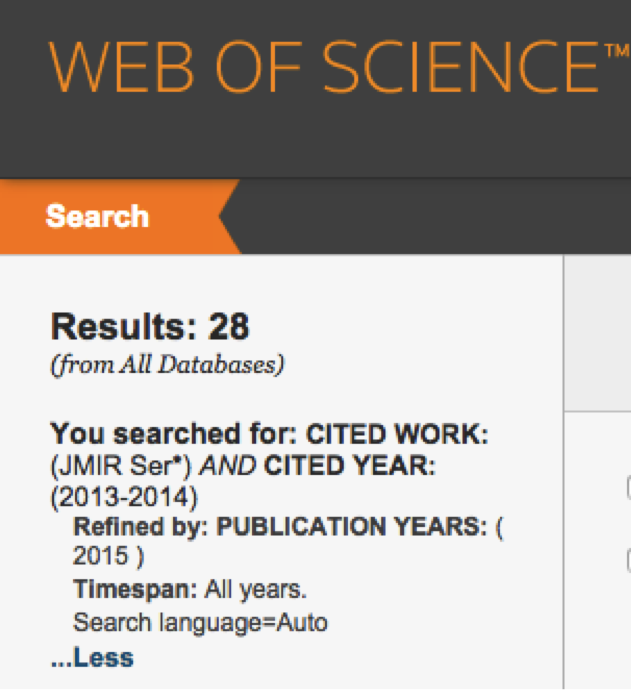-- This is an archived version, for an update in 2017 see http://games.jmir.org/announcement/view/142 --
(Toronto, 23 Jan 2016) As recently announced, Thomson Reuters, producer of the Journal Citation Reports and Web of Science and other database products, is creating a new edition of Web of Science (Emerging Sources Citation Index, ESCI), and JMIR Serious Games is one of the journals selected for inclusion. We are often asked by authors "What is the impact factor of JMIR Serious Games [or another JMIR sister journal]", even if this journal is still relatively new.
The 2015 impact factor of a journal can be calculated as follows (Wikipedia):
- 2015 impact factor = A/B
where:
- A = the number of times that all items published in that journal in 2013 and 2014 were cited by indexed publications during 2015.
- B = the total number of "citable items" published by that journal in 2013 and 2014.
The Journal Impact Factor can therefore only be calculated in year 4 of the existence of a journal (only in 2016 we know how many citations the articles from 2013-2014 accumulated in 2015), thus an impact factor is undefined for the first 4 years, and authors can only look at the number of citations their specific article produces to gather "impact" of their work! And in practice, it takes Thomson Reuters much longer than 4 years to officially list a journal in its Journal Citation Reports (JCR). In the meantime, some publishers calculate "unofficial" impact factors, which can be done for a 2015 impact factor by dividing the number of published articles in the previous two years (B) by the number of results when searching Web of Science for citing articles published in 2015 (A).
JMIR Serious Games is now finally "old" enough (in its 4th year) that we can comment on the impact factor.
The projected impact factor for JMIR Serious Games (2015) is 1.8, calculated from 28 (citations in 2015) / 16 (citable published articles 2013-2014).
This represents the average number of citations for our articles published in 2013-2014. This is a conservative measure which is still increasing, because the Web of Science search was conducted early 2016, while the number of citations in 2015 may still increase, as the index catches up on 2015 publications.
This confirms JMIR Serious Games as a journal that is - while perhaps not a top cited journal such as JMIR - an above-average cited journal, which is cited more often than half of the journals listed in the JCR General Medicine category (the median impact factor for the 154 journals in that category was 1.276 in 2014, meaning that JMIR Serious Games would be in the upper half of the officially ranked JCR journals). Note that there is currently no JCR-indexed journal focusing on games and gamification in health. This is a remarkable achievement for a new journal, and it mirrors the success of other JMIR sister journals such as JMIR mHealth and uHealth (projected IF: 2.03) or i-JMR (projected IF: 1.5).
In the meantime, while we await the official Thomson Reuters report with JMIR Serious Games included, we hope that Tenure & Promotion Commitee's will follow the recommendations of the DORA statement, which recommends to take into account other metrics (in particular article-level metrics, but also "proxy calculations" such as the one conducted above), while we are awaiting an "official" impact factor. We invite authors who are faced with questions from their T&P Committee to include this calculation.
A. Number of published articles in 2013-2014: 16
B. Number of 2015 citations citing JMIR Serious Games articles from that period: 28

Disclaimer: Calculations are our own and are not provided or endorsed by Clarivate Analytics, the owner of Web of Science and the Journal Citation Reports.
